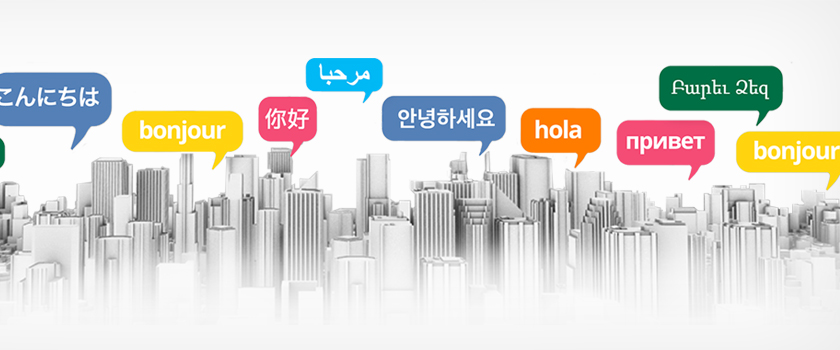2025 Offer Request a Quote Today and Grab a $50 Coupon for Free!
Creating massive amounts of content, buying ads, and keeping the social media game up is what most businesses would do to keep maximum visitors coming to their website. These are surely some amazing ways to build your brand’s credibility in the market, but certainly not the only ones. Have you ever thought about making your website multilingual? If not then you are missing out on something really big. Having a multilingual website can really elevate your website visitors, but not many online businesses consider this.
Translating the website to the native language of your target audience can prove to be a big leap for your business. Doing SEO for multilingual websites wouldn’t be that different; though you have to make some tweaks to your conventional SEO tactics.
In the following sections, we’ll be talking about some important SEO factors you should keep in mind to create a multilingual website.
Multilingual Website SEO is used to optimize websites in multiple languages. Obviously, it is not as simple as doing SEO for a one-language website. Based on the location of visitors, the content of multilingual websites is translated to their native language. The SEO of a website is based on content, keywords, and a couple of other factors that can get a little messed up when you translate the website’s content.
While switching from one language to another, as the content of the website is translated from original language to foreign language, it is also important to translate meta tags, descriptions, and targeted keywords. Simply put, multilingual website SEO would be done to optimize a website for native speakers, for a particular location. For example, maybe your website is ranking on top of the Google page in your language, but it does not necessarily rank high when you translate it to another language.
Things might look confusing if you haven’t done multilingual website SEO before, but it wouldn’t be that hard. You just have to follow the steps and keep in mind a few SEO key factors, which can affect your multilingual website rankings.
There are various SEO factors that must be considered while setting up a multilingual website. As we know, it is important to perform good SEO practices to improve the overall online user experience and rank your website higher on search engine results. Similarly, when it comes to multilingual website SEO, Google has introduced some SEO practices and other measures to improve your rankings. Below are some actionable SEO practices that you should be following to boost your content marketing strategies and get more traffic to your multilingual website.
If you want to create a multilingual website, you must keep in mind that it is not just the content of your website which is supposed to be translated to another language. There are many other things that need to be translated, such as meta tags, descriptions, and images alt text. We know how essential is metadata to the SEO of a website, as well as it is also a significant piece of content for audiences. So, make sure you’re translating the metadata along with website content.
Without translating the metadata, it is almost impossible for you to rank your web pages, other than the original language. It can be a bit time-consuming, but essential to rank your website for all languages on search engines.
It wouldn’t be wrong if I can say “URLs” are one of the most ignored elements of websites when it comes to switching from one language to another. For example, when someone translates the services page to Italian, the URL is still websitename.com/services, although the main content is changed to the Italian language. You have to make sure that the URL is also translated into websitename.com/ servizio. Doing this would allow foreign audiences to easily search your website through a browser.
The easiest way to do this is to edit your slugs for each website page, translating it to your native language. You can do it manually, or use online tools for the purpose. You can easily find many free slug translation tools online.
As we know, keywords are one of the most crucial parts of any website’s SEO. Using the right keywords, in the right proportion, at the right places can actually get you more visitors through search engines. Managing the keywords for a multilingual website can be difficult, especially when you don’t understand the language, they are to be translated in. It may take you some time to master this; otherwise hiring an SEO expert, who has fair experience in multilingual websites, would be a better choice. Keywords can do wonders for your online business, but it all depends on their usability. Ignoring the important keywords, or overusing them, can cause problems to your website’s SEO, so you have to be very careful about keywords usage.
Of course, you have to translate your keywords as well, but the translation should be done keeping in mind the popular search phrases used by native audiences of the targeted languages. So, the word-to-word translation might not work here.
You have to conduct keyword research for your native language to get maximum organic traffic on your multilingual website. Conducting competitive research, or getting opinions from native SEO professionals can help you to put the right native keywords to your multilingual website. For translating the website content, along with metadata, and selecting the keywords based on native speaker searches, you should hire a trusted company providing transcreation and content localization services. You can also find translators, linguists, and SEO experts on freelance platforms as well.
It is important to keep checking the performance of your keywords for multilingual websites in different regions. You can use any ranking tracking tool to conduct country-specific tracking for your keywords. Analyzing your keyword performance would allow you to know which keywords are working well for a specific region and which keywords are not driving the desired results.
Sometimes keywords do rank, but for wrong locations. If this is so, you should check the hreflang tag. If there is still some error, you better consult with a technical SEO expert to fix the issue.
If you want to keep your website experience consistent for all users around the world, the best approach will be to use one platform for all locales. In the case of an eCommerce website, it will be not just easier for you to manage your products and services on one platform, it would also allow you to use the same content model for each location.
Similarly, by using one platform for all locations, you can easily manage the translations. Content would be more manageable, and you are more likely to track the missing translations. Not just that, it will be good for your SEO as well, because most search engines don’t prefer bilingual pages.
Hreflang tags help the search engines recognize the language of your website. Google also uses hreflang tags to not just identify the website’s language but also to figure out the target audiences of the website geographically. For example, if a website page is in the English language, its hreflang tag would look like hreflang = “en”.
There are many ways you can add this tag to your web pages. Doing it manually can be a bit time-consuming because you have to edit the tag on each page individually. Using the plugins or online tools would add the tags automatically to your web pages for each language, and it would be a more convenient and quick way of adding hreflang tags. So, while doing this SEO for your multilingual websites, you can simply add hreflang tags without any hassle.
The biggest mistake most multilingual websites make is that they translate the main parts of a web page, while some areas are still in the original language. It can cause big blunders and make your website traffic go down rapidly.
For example, sometimes the main content of the website is translated, but user-generated content or navigation text remains untranslated. It does not just make your site look confusing to the user, but also badly affects the SEO rankings. To avoid such a thing, you should add hreflang tags to your web pages, as discussed earlier. This tag, on your web page, will ensure that there is only one language used on it. So, if you want to translate the website content to German, it should be all German including the metadata and keywords.
Having more than one language on your web page not just affects the users’ online experience, but also makes it difficult for them to navigate through your website. Similarly, if the user-generated content is not translated, it would confuse the visitors, and the content will lose its context. Therefore, it is recommended to hire a professional content localization company that makes sure complete content is translated on your website. Online service providers help businesses have a hassle-free localization experience- without compromising on SEO.
Your SEO strategy should be strong if you really want to spread your roots to the foreign marketplace. Here are a few extra SEO tips to ensure that your multilingual website SEO is doing well.
Since 2018, website loading speed has become a major ranking factor for almost every search engine. No matter how well-researched are your keywords and how high is the quality of your content, if your website’s speed is slow, Google would never rank you higher. Your website speed plays a major role in determining your rankings on search engines. Google cares about user experience and only ranks the sites offering more optimized experience to users.
Having a slow website would frustrate the users, and they would immediately switch to your competitors’ websites. Increasing your website’s loading speed can drastically raise the number of people visiting your website.
● Optimize the images used in web pages
● Add plugins to enable page caching
● Set up your browser setting
● Add a CDN to your website.
The above methods might seem technical to you; in this case, you can hire a technical SEO expert. Using platforms like WordPress would allow you to optimize the speed without writing any code.
There are around 4.39 billion people using the internet worldwide, out of whom, nearly 4 billion use Google for online browsing. Without any doubt, Google is one of the most widely used international search engines. However, to make your multilingual website successful you should be exploring the potential in other search engines as well. You might not have even heard about it, but Baidu is the most popular search engine in China; similarly, in Russia, people are more likely to use the Yandex search engine to find any information online. Being a multilingual website, you must enhance your brand’s visibility on multiple search engines.
In a nutshell, maintaining the SEO for a multilingual website should be the most essential part of your localization plan. Multilingual SEO would allow you to increase your search engine ranking for different regions, where your business is operating. There are many websites that give their visitors the option to translate the website content to their native language. The demand for website localization is rapidly increasing, as it allows businesses to connect with foreign audiences in a better way. Multilingual websites make the content of websites easier to understand for foreign audiences and allow the business to expand its roots to the international marketplace.
There are many localization service provider companies out there making your job even easier. Hire any reliable & professional translation service provider to manage your localization needs without dropping SEO ranking.

On the Labour Day Holiday, 147,000,000 Plus Chinese people choose to travel around the country. Labour Day is one of the
Read more
There are 196 countries in the world in which 25 of them are very rich which shows that they are
Read more
dwg: It means a drawing file save format created by AutoCAD, and now has been the standard format of 2D
Read more
To sum up the publicity stance, sometimes the marketing campaigns do not have their envisioned result. When publishing the brand ads
Read more
The state of Assam is the king producer of tea in India; Dibrugarh is the hub of tea gardens in
Read more
Digital signage is the form of electronic display that shows information, advertising and other messages. Digital signage such as LCD,
Read more
Did you know that Malay’s official name is Bahasa Malaysia? Did you know that it is basically a parent language
Read more
Portuguese is the language that far too often gets ignored. But the truth is Portuguese is one of the world’s
Read more
For the past 5-6 years, Translation Services have seen a great boom in business. Although, large corporate firms have been
Read more

